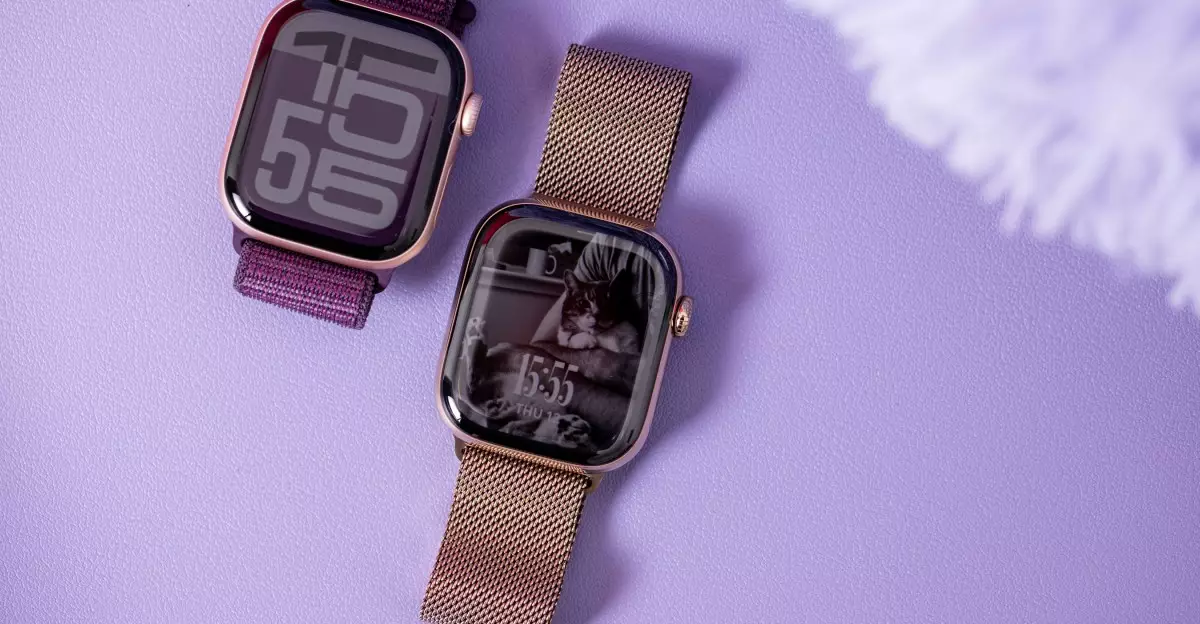Since entering the wearable tech market, Apple has consistently pushed the envelope, redefining the interaction between technology and daily life. With its plans to introduce camera-equipped AI wearables by 2027, the company is on the brink of a revolution that could further blur the lines between digital and physical realities. According to Mark Gurman’s insights from Bloomberg, the forthcoming Apple Watch and AirPods will integrate advanced visual recognition capabilities. This move not only highlights Apple’s commitment to innovation but also reflects a strategic pivot toward enhancing user experience through artificial intelligence.
Visual Intelligence: A Game-Changer for Apple Devices
The introduction of Visual Intelligence features marks a pivotal advancement in wearable technology. By integrating cameras into the Apple Watch—positioned discreetly within the display for standard models and alongside the digital crown in the Apple Watch Ultra—these devices will gain the ability to constantly “observe” and interpret the user’s surroundings. This capability positions Apple to capitalize on how we access and interact with information in real-time. Imagine receiving immediate updates about nearby restaurants or events simply by glancing at your wrist; the possibilities for personal convenience are vast.
The Competitive Landscape
In a market that is rapidly evolving, Apple’s direction may set it apart from competitors. While other technology companies have experimented with similar features, the seamless integration of Visual Intelligence into devices that people use daily could give Apple a considerable edge. Unlike competitors who may rely heavily on third-party AI models, Apple’s intent to develop its own proprietary models suggests a commitment to enhancing user privacy and control over personal data, a necessity in today’s digital landscape where concerns about security are paramount.
The Visionary Leadership Behind the Innovation
Integral to this ambitious plan is Mike Rockwell, who has transitioned from overseeing the Vision Pro project to driving the development of these new AI features. His experience positions him uniquely to bridge the gap between hardware and software, ensuring that the upcoming capabilities align with Apple’s overarching vision. Rockwell’s leadership is crucial, not just for enhancing Siri’s functionality but for consolidating the entire ecosystem of AI-powered devices. The synergy between hardware and AI is essential, and with Rockwell at the helm, there’s potential for groundbreaking advancements that could change how we perceive and interact with technology.
A Look Ahead: The Future of Augmented Reality
Beyond the immediate releases of these AI-enhanced wearables, there is a broader vision that includes the possibility of augmented reality glasses. While these are still in the nascent stages, the groundwork being laid now could lead to a future where our devices do more than communicate—they interact with our environment in a meaningful way. The convergence of AI, augmented reality, and wearable technology could redefine our day-to-day experiences.
Apple’s relentless drive to innovate and redefine technology positions it to not just meet the needs of the present, but to anticipate the desires of the future. With products like the camera-equipped Apple Watch and AirPods on the horizon, consumers can expect a transformation that enhances everyday experiences in unprecedented ways.

